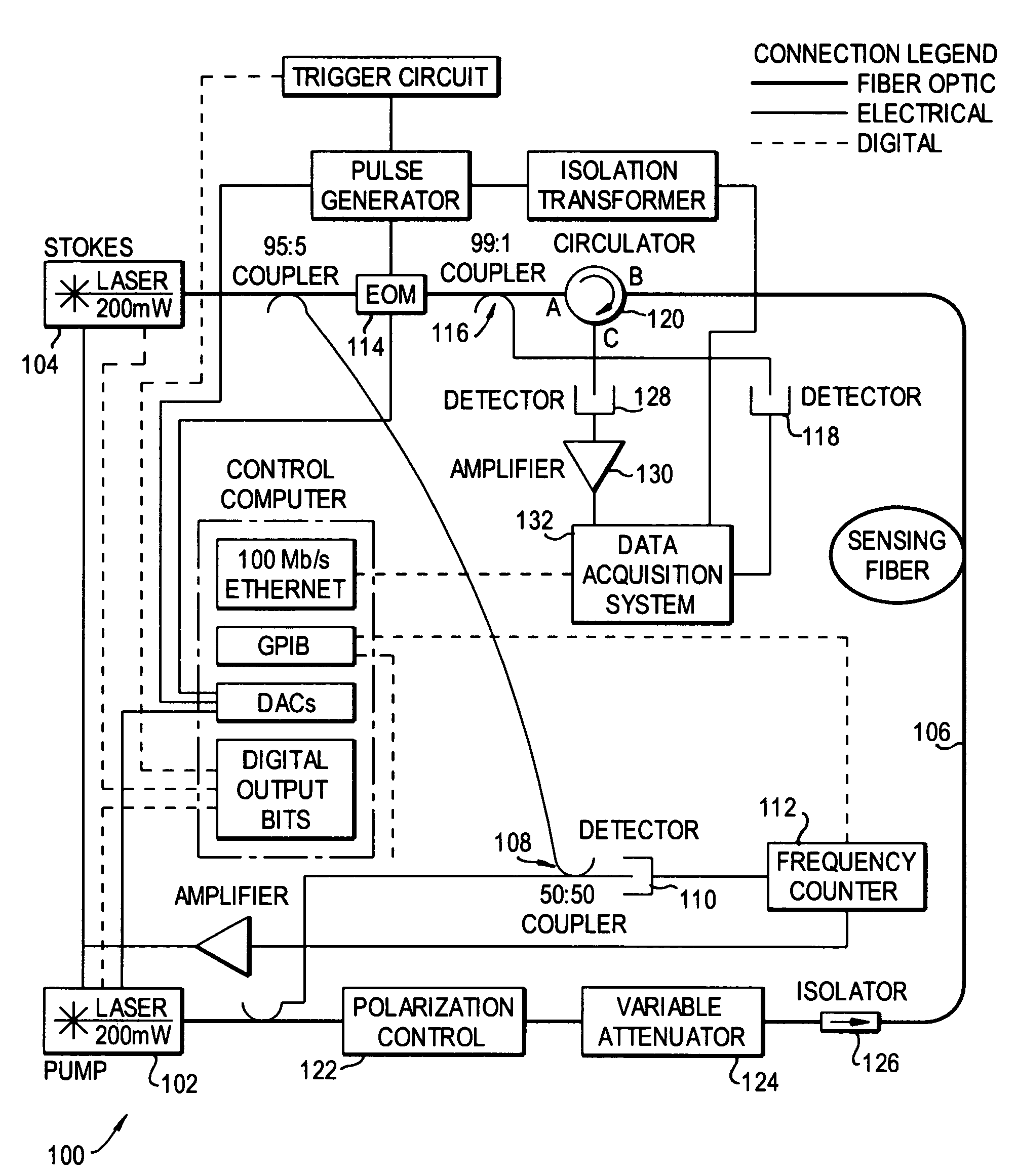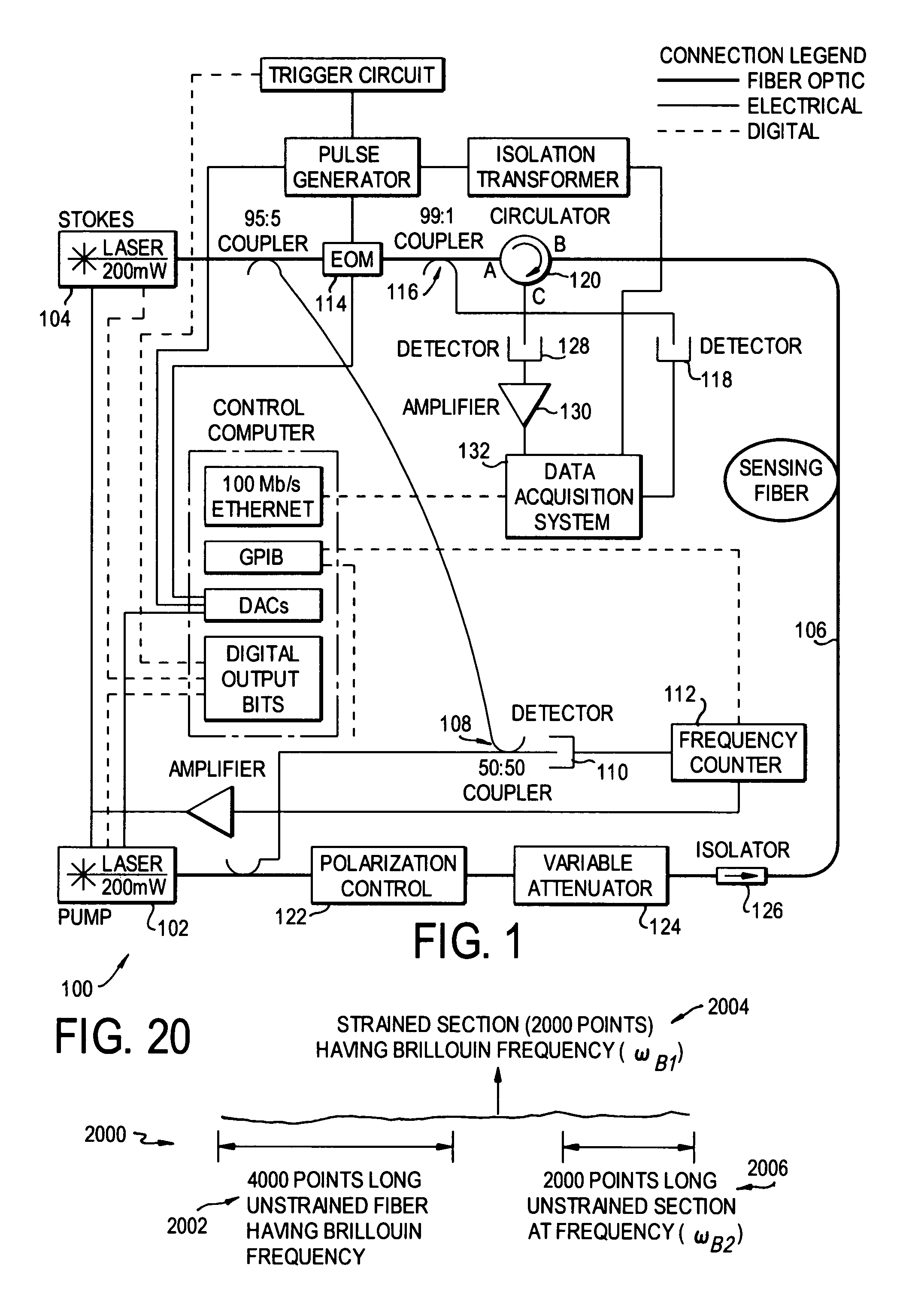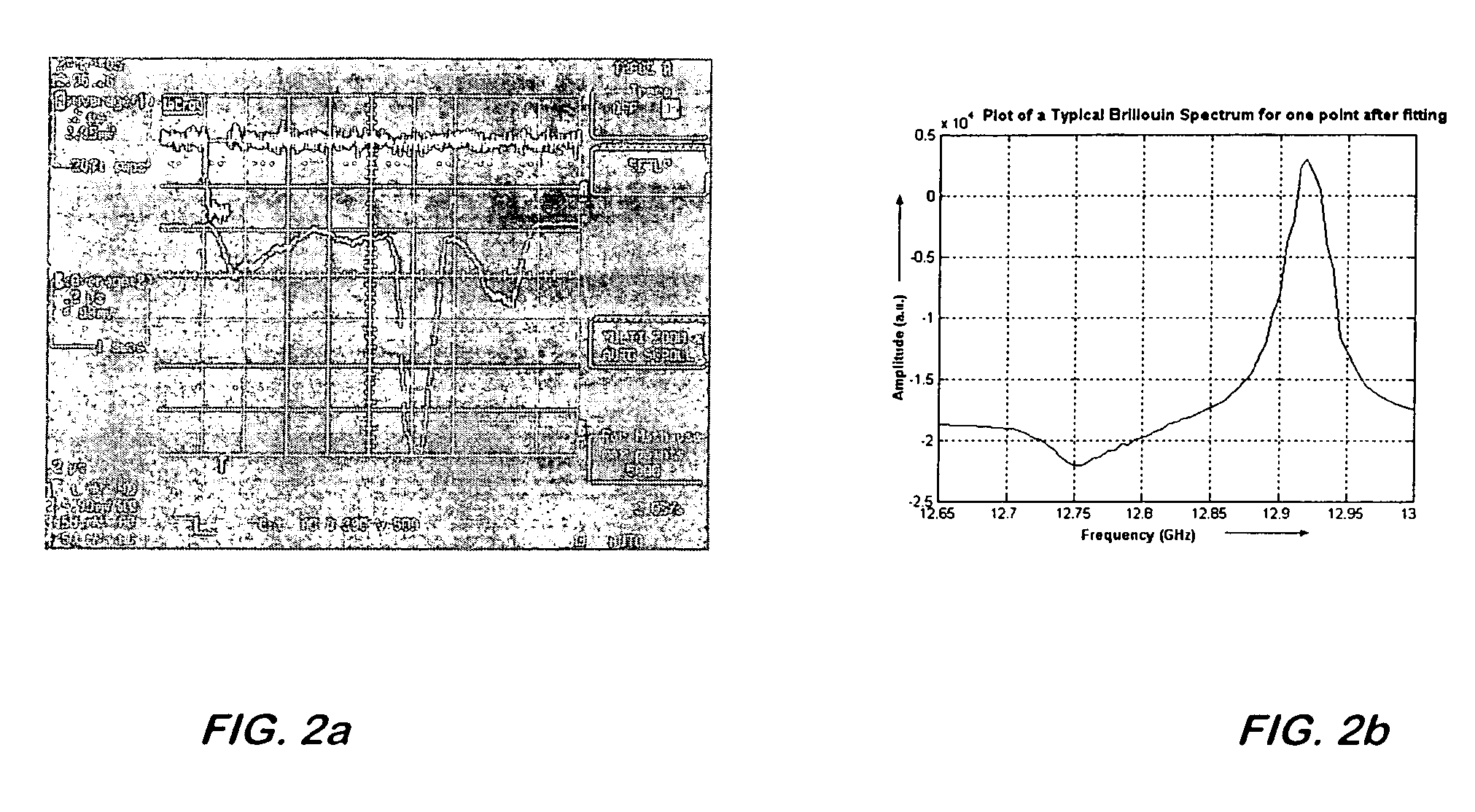Dynamic strain distributed fiber optic sensor
a fiber optic sensor and dynamic strain technology, applied in the field of physical characteristics measurement, can solve the problems of only 5 cm long vibrating section, amplification of the pump, loss of the probe, etc., and achieve the effect of shortening the measurement tim
- Summary
- Abstract
- Description
- Claims
- Application Information
AI Technical Summary
Benefits of technology
Problems solved by technology
Method used
Image
Examples
Embodiment Construction
[0097]A preferred embodiment of the present invention and modifications thereof will be set forth in detail with reference to the drawings, in which like reference numerals refer to like elements or steps throughout.
[0098]The sensor system according to the preferred embodiment is based on the principle of Brillouin loss mechanism. The overall system diagram is shown in FIG. 1 as 100. The Nd:YAG lasers 102, 104 operate at 1319 nm. The pulsed light from the pump laser 102 enters one end of the fiber 106, and the cw light from the probe laser 104 enters the other end of the fiber. The frequency difference is varied over a range of values to cover the entire Brillouin spectrum on each point on the fiber. The entire system is automated using software called NTControl which automatically changes the frequency and acquires the data. NTControl is user friendly software having a window in which 35 settings can be adjusted, the most important ones being the fiber start, fiber end, time base, ...
PUM
 Login to View More
Login to View More Abstract
Description
Claims
Application Information
 Login to View More
Login to View More - R&D
- Intellectual Property
- Life Sciences
- Materials
- Tech Scout
- Unparalleled Data Quality
- Higher Quality Content
- 60% Fewer Hallucinations
Browse by: Latest US Patents, China's latest patents, Technical Efficacy Thesaurus, Application Domain, Technology Topic, Popular Technical Reports.
© 2025 PatSnap. All rights reserved.Legal|Privacy policy|Modern Slavery Act Transparency Statement|Sitemap|About US| Contact US: help@patsnap.com



